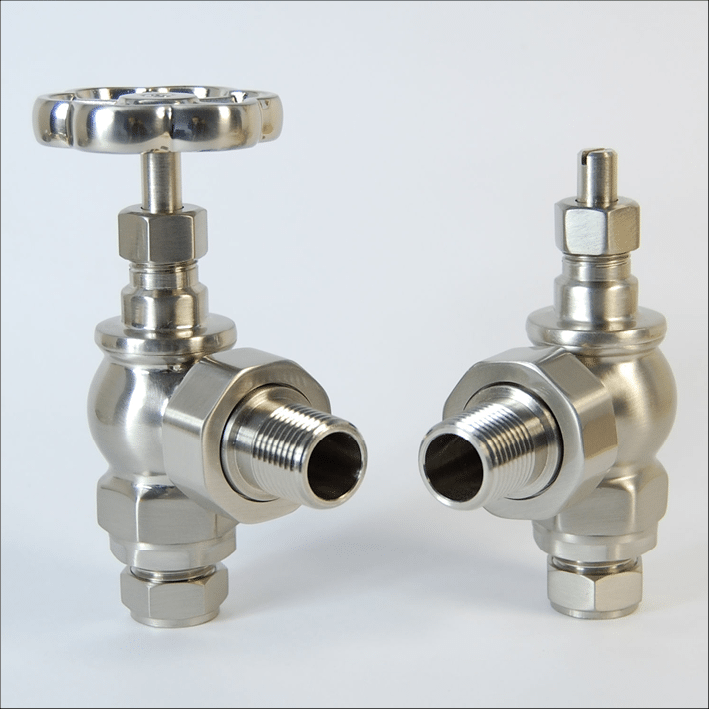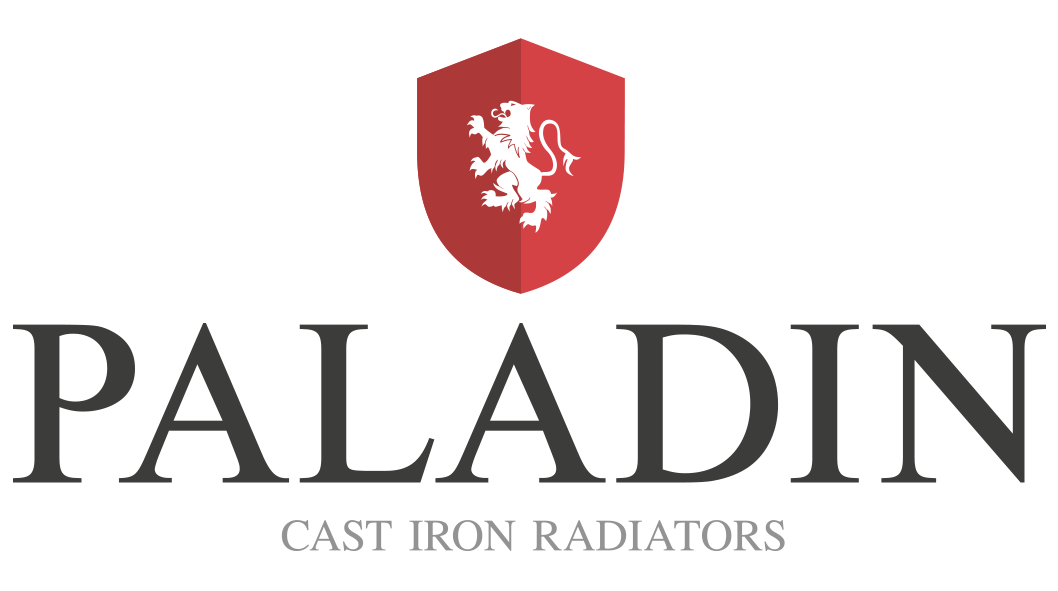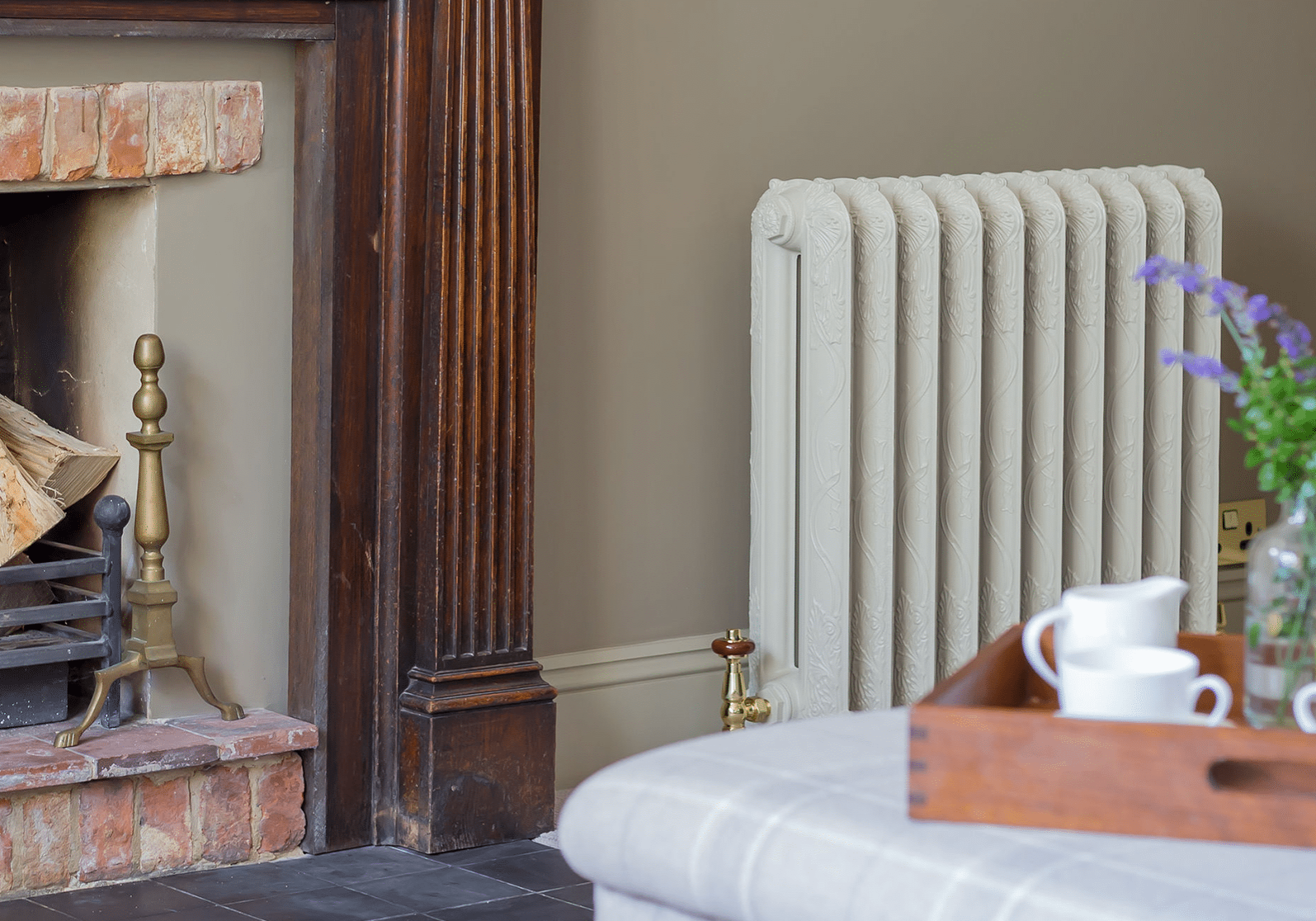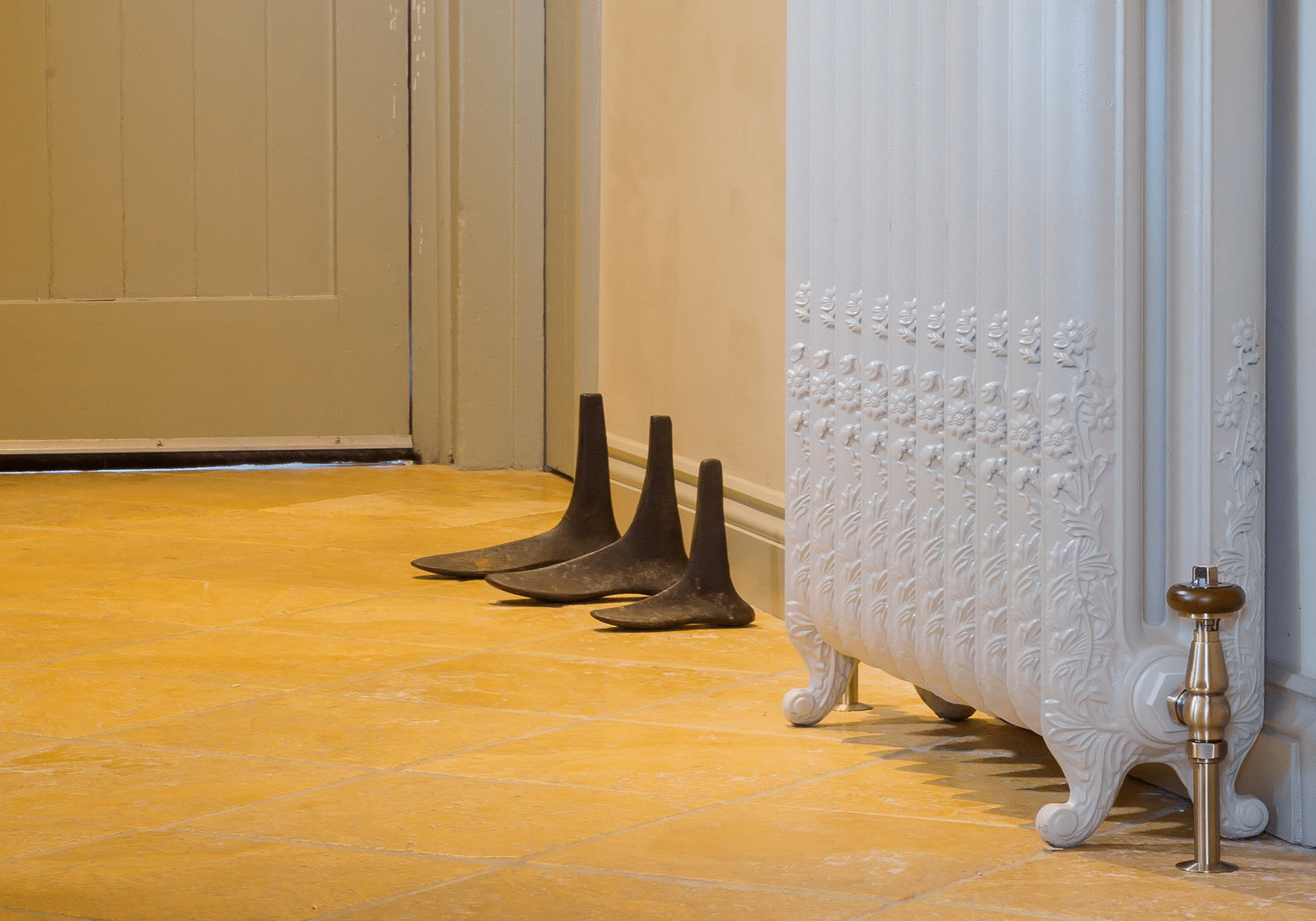Manual or Thermostatic Valves: How to Choose
Optimising the performance of your cast iron radiators begins with choosing the correct valve. This involves understanding how different valves can influence your heating system’s efficiency, control and effectiveness.
There are two primary types of valves to consider: manual and thermostatic. Each type offers different benefits. Manual radiator valves are straightforward and often favoured for their simplicity and reliability. In contrast, thermostatic radiator valves provide advanced regulation, allowing for automatic adjustments based on the ambient temperature and enhancing energy efficiency and comfort.
Knowing the distinctions between these valve types is essential for making an informed decision. It ensures that your cast iron radiators perform optimally, providing consistent and efficient heating throughout your space.
You can choose the valve that suits your specific needs by comparing the features and advantages of manual and thermostatic valves.

Brushed Nickel
Understanding manual valves
Manual valves are straightforward to use and allow you to control the flow of hot water into your radiator by manually adjusting the valve.
Advantages of manual valves
- Manual valves are straightforward to use.
- There’s no need to program or set temperatures, making them ideal for those who prefer a hands-on approach to controlling their heating system.
- Manual valves are generally less expensive than thermostatic valves, making them an attractive option for those who want to manage upfront installation costs.
- Manual valves can enhance the visual appeal of traditional cast iron radiators for those who prefer a more classic appearance.
- They provide immediate and direct control over the radiator, allowing you to quickly adjust the heat output to suit your immediate comfort needs.
- Unlike some advanced thermostatic systems, manual valves do not rely on electricity, ensuring they function reliably during power outages.
Manual valves are a practical and economical choice for those who value simplicity, reliability, and aesthetic compatibility with their cast iron radiators. They provide straightforward operation, durability, and various design options.

Antique Copper
Understanding thermostatic valves
Thermostatic Radiator Valves, commonly shortened and referred to as TRVs, offer a higher level of control by automatically regulating the flow of hot water based on the room’s temperature.
Advantages of thermostatic valves:
- TRVs automatically regulate the flow of hot water into the radiator based on the room’s temperature, reducing energy wastage.
- By optimising heating efficiency and reducing energy consumption, TRVs can lead to long-term cost savings on heating bills.
- Different rooms can have different temperature settings, allowing for a tailored heating solution that meets individual preferences and needs.
- TRVs require minimal adjustment once set to the desired temperature, providing a set-and-forget convenience. It’s ideal when you’re not at home.
- TRVs adapt to changing room conditions, such as variations in sunlight or occupancy, automatically maintaining the desired temperature.
- They allow you to control the temperature of individual rooms independently, offering precise zone control throughout your home.
- By optimising energy use, TRVs reduce your home’s carbon footprint and support environmental sustainability.
- Many modern building regulations and standards encourage using energy-efficient heating solutions like TRVs.
Thermostatic valves are energy-efficient and convenient. They can maintain consistent and comfortable temperatures and reduce energy consumption.
TRVs are great for optimising your heating systems and reducing energy costs. It’s also important to state that properties with a modern boiler fitted since 2022 must use TRVs instead of manual valves.
Making the right choice
Both manual and thermostatic valves have benefits and are great options for your home. It’s a personal choice, and there is plenty for you to consider.
Factors to consider
When deciding between manual and thermostatic valves, several factors should be taken into account:
- Manual valves are generally more affordable if upfront costs are a significant concern.
- Think of the long-term savings of TRVs, which might offset the higher initial investment through reduced energy bills.
- Manual valves offer simplicity and direct control if you prefer hands-on control and frequent adjustments.
- TRVs provide automated control with minimal manual intervention for those who favour convenience.
- In large properties with multiple rooms, TRVs can provide better efficiency by allowing different settings in different areas without you having to go around and make changes manually.
Some homeowners opt for a combination of both valve types for optimal performance. For example, they use TRVs in frequently used rooms like living areas and bedrooms while installing manual valves in less frequently used spaces.
Choosing between manual and thermostatic valves for your cast iron radiators depends on your needs, preferences and budget. Manual valves offer simplicity and a cost-effective solution, while thermostatic valves enhance control and energy efficiency.
By understanding the benefits of each valve type, you can make a well-informed decision that ensures your home remains warm and comfortable while maximising the efficiency of your heating system.
For more information, please contact our team on 01205 280354 for personalised advice.
“I want to say thanks and how fantastic the radiators look along with the cast quality and the excellent painting and polishing finish. I now can’t wait to get them installed! Many thanks again for all your help and assistance.”
“Thank you for all your help, we will definitely recommend Paladin to anyone we know who is looking for cast iron radiators and will get in touch when we’re needing radiators for our ground floor.”





